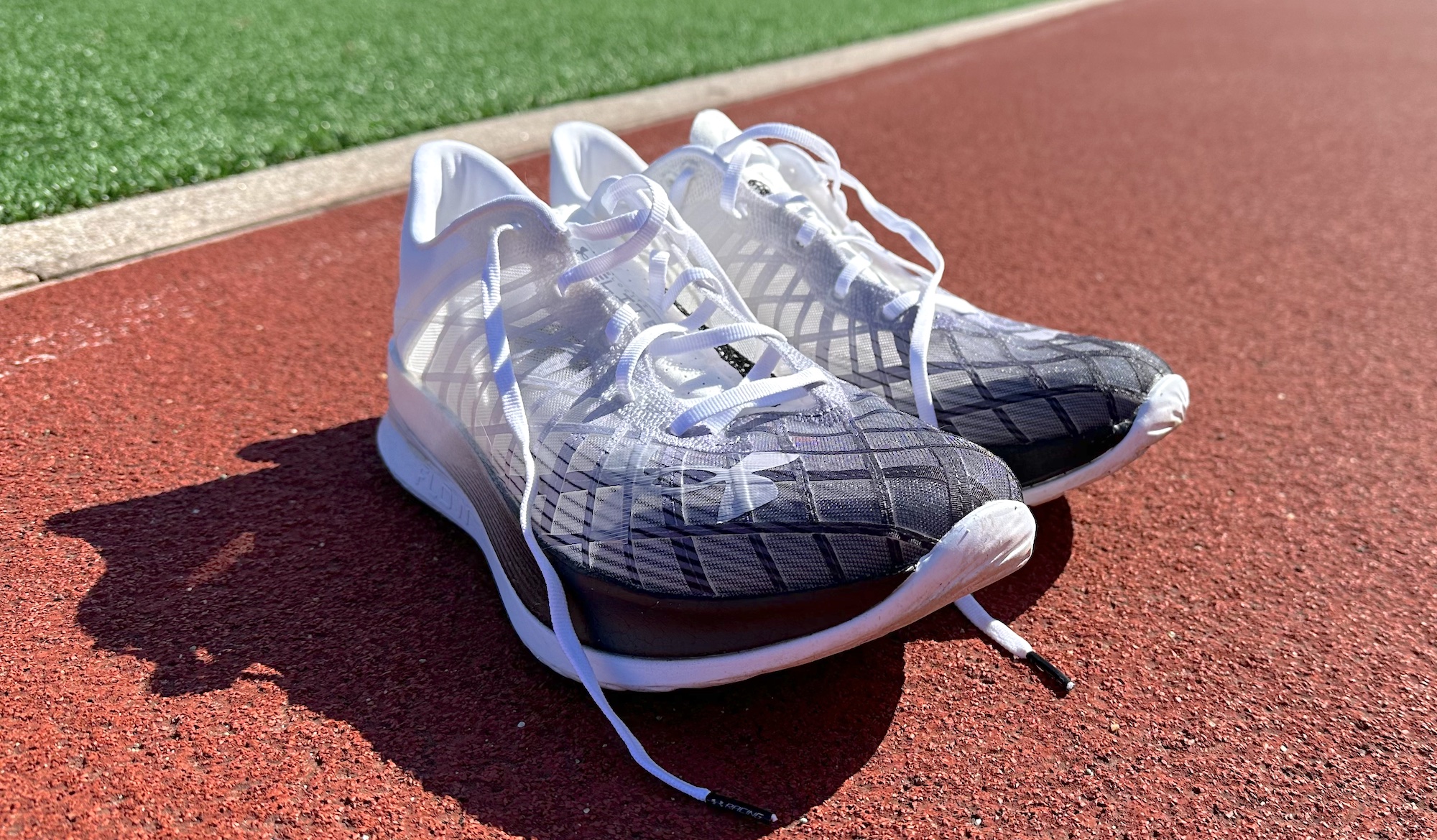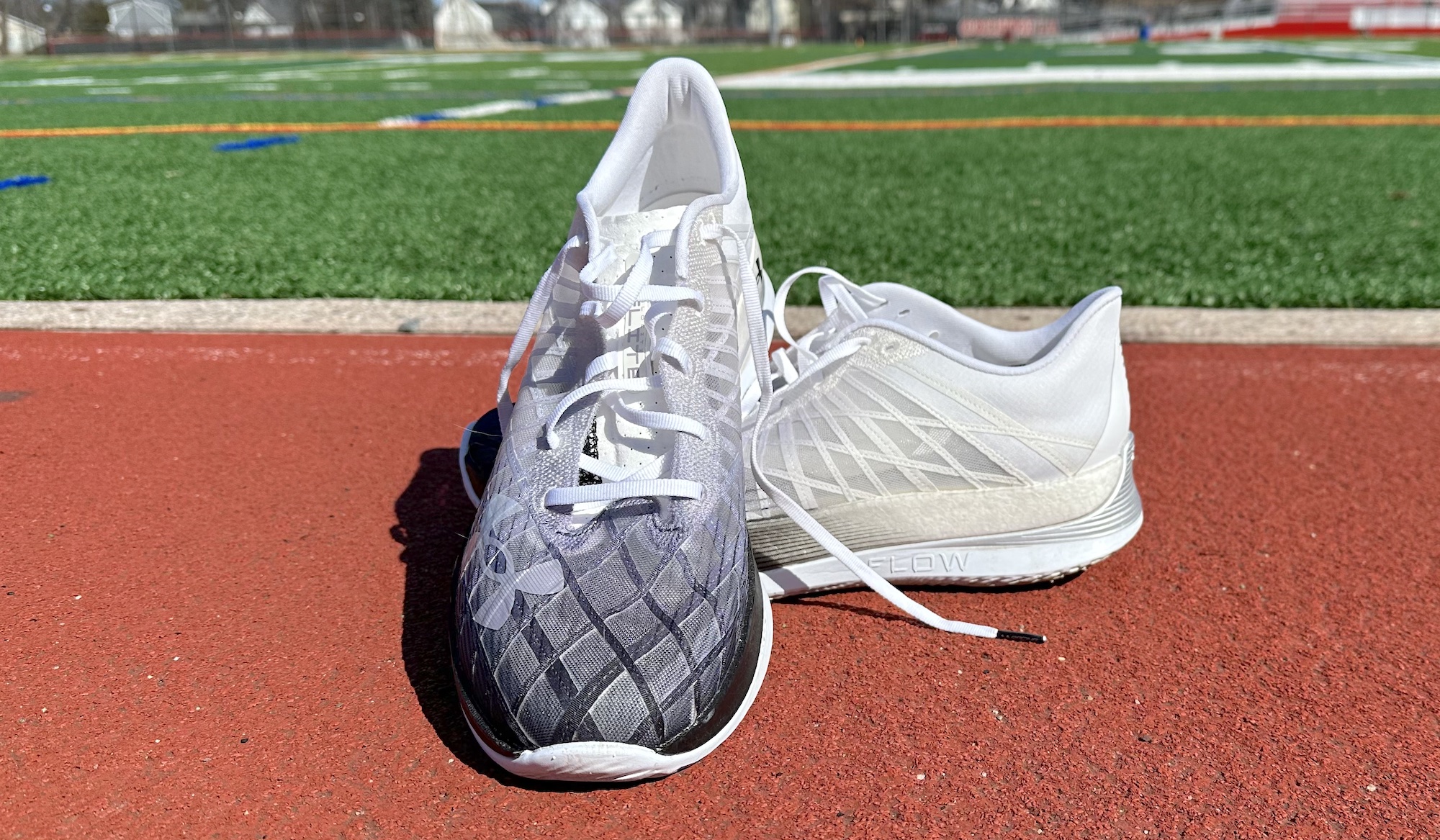5 things I learned when I ran 20 miles in Under Armour's $250 carbon fiber super shoes

Can a pair of carbon-fiber supershoes really turn you into a faster runner?
I'm currently training for the London Marathon; it's been 10 years since I've run a marathon, and a lot has changed since then. For one thing, I'm a lot older, and, thanks to my general lack of running the past five years, I'm a good deal slower, too.
But there's been a revolution in running shoes, thanks to the introduction of carbon fiber plates, which literally put a spring in your step as you run. Carbon fiber running shoes are a must-have among elite athletes. But how would they work for an average joe like me? To find out, I ran in the Under Armour Flow Velociti Elite, the company's first pair of carbon fiber shoes, which will be released on April 13.
The Velociti Elite debuted last year, and were worn by Sharon Lokedi when she won the 2022 NYC Marathon. Surely, these $250 shoes could help me too, right?
I ran for about 20 miles so far in the Velociti Elite — two short runs followed by a 13-mile run — and compared them with the Under Armour Charged Gemini and the Nike Air Zoom Pegasus 39s, both of which cost around $100, but are some of the best running shoes around. Here's what I found.
I'm faster (I think)

I'm not going to set any course record — at my best, I finished a marathon in 3 hours and 52 minutes — but I definitely felt faster when wearing the Velociti Elites. My stats would seem to back that up; on my short runs of about 3 miles, I averaged around a 9-minute mile, versus 9:24 when wearing the Under Armour Charged Gemini (the company's $100 all-around running shoe).
However, on my 13-mile run, my average pace wearing the Velociti Elite was 10:19, not that much different from the 10:24 pace I had the previous week when I ran 11 miles in another running shoe.
Get instant access to breaking news, the hottest reviews, great deals and helpful tips.
I then went to the track, and ran a mile each wearing the Velociti Elite, the Under Armour Charged Gemini Running shoes, and the Nike Air Zoom Pegasus 39, which is currently at the top of our list of the best running shoes. When I looked at the results from my Garmin Epix 2 watch, I found that I ran each mile at almost exactly the same pace: 8:25. I did notice that my cadence was slightly faster when wearing the Velociti Elites, though.
My toes were colder (at first)

In order to shave their weight (my size 12 models weigh 9.3 ounces, compared to 10.95 for the Nike Pegasus 39 and 11.6 ounces for the UA Charged Gemini), the Velociti Elite uses some pretty thin material. How thin? I can read the writing on my socks through the top of the shoe. In the picture above, you can see the light shining through the side of the shoe.
The first time I stepped out on a cold winter's day, I definitely noticed the difference when the wind cut right through, chilling my toes. However, once I had a mile or two under my belt, my feet warmed up, and I didn't notice the cold.
Still, the thin uppers on the Velociti Elite also made me much more conscious about avoiding puddles; I didn't test it, but it looks like any splash of water would go right through to my feet.
I'm not working as hard
The Velociti Elite's carbon fiber plates create a funny sensation when you're running; I felt as if the shoes caused my heels to "pop" off the ground, which made it feel like I had to put less effort into lifting my legs than with other running shoes.
It definitely made it feel like the shoes were doing a lot more work than other running shoes, and as a result, made it easier for me to move along at a faster pace without working as hard.
I have to be more careful on corners

Common to many carbon-fiber shoes, the Veloci Elite aren't as stable as other running shoes. I found my ankles rolling a bit more, especially when running around corners, or trying to make a sharp turn.
The lack of ankle support also showed up when I was running along the side of a road; if the road has a camber (meaning, it's highest in the middle, and curves down toward each curb), you'll have more trouble keeping your ankles straight if you're running along the side of the road.
They're not as effective on hills
When going up hills, I found that, because my heel wasn't pressing as hard against the pavement as when I was on level terrain, I wasn't getting the same effect from the Velociti Elite's carbon fiber plate. There wasn't that same bouncy return in my heel.
That being said, I did notice some benefit compared with the other running shoes; hills did seem a bit easier in general.
Under Armour Flow Velociti Elite: Overall impressions

I'm still finalizing my review of the Under Armour Flow Velociti Elite, but overall, I'm pretty impressed with the shoe. My times may not seem like I'm running faster, but I certainly feel like I am. These shoes definitely put a spring in your step that lets you run with less effort.
While an average runner like myself probably won't get as much benefit out of the Velociti Elite as someone with a Boston marathon qualifying speed, I did appreciate their responsiveness as well as their light weight, and look forward to seeing how they feel once the weather gets warmer — and my training miles get longer.
More from Tom's Guide

Michael A. Prospero is the U.S. Editor-in-Chief for Tom’s Guide. He oversees all evergreen content and oversees the Homes, Smart Home, and Fitness/Wearables categories for the site. In his spare time, he also tests out the latest drones, electric scooters, and smart home gadgets, such as video doorbells. Before his tenure at Tom's Guide, he was the Reviews Editor for Laptop Magazine, a reporter at Fast Company, the Times of Trenton, and, many eons back, an intern at George magazine. He received his undergraduate degree from Boston College, where he worked on the campus newspaper The Heights, and then attended the Columbia University school of Journalism. When he’s not testing out the latest running watch, electric scooter, or skiing or training for a marathon, he’s probably using the latest sous vide machine, smoker, or pizza oven, to the delight — or chagrin — of his family.
